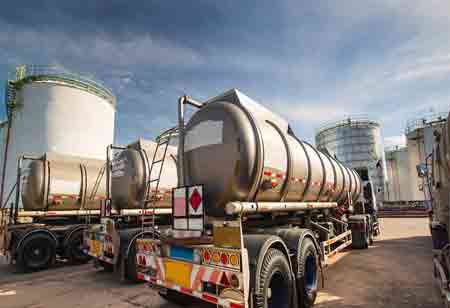Chemical transport challenges include regulatory compliance, safety, and environmental sustainability. However, firms find ways to adapt to rising demand amid high efficiency and sustainability.
Fremont, CA: Chemical transportation is critical in the global economy, ensuring that all other industries, including pharmaceuticals and agriculture, obtain all their essential materials. With the increased demand for chemical products come multiple challenges, such as transporting these goods requiring novel interventions. From regulatory compliance and concerns for safety to logistics and sustainability within their environment, the sector must operate in an increasingly complex landscape, promoting creativity and adaptability on the part of transportation providers.
Chemical transportation is a challenging business in terms of compliance with regulations, as the industry operates in a significantly regulated environment. Moreover, transport, storage, and handling of hazardous materials are also subjected to strict norms, which can differ in each country and region. Therefore, organizations have established and opted for compliance management systems, and employees have been trained on safety and compliance matters.
Safety is always paramount in chemical transportation since the implications of a mishap while carrying hazardous materials can be widespread. Leaks, accidents, and spills can threaten public safety and the environment. Transportation providers focus on developing robust safety protocols and investing in superior technology to minimize these risks. Real-time monitoring systems with IoT sensors also help companies monitor conditions during transit, such as temperatures and pressure. If any anomalies occur, they can be responded to rapidly. Automated safety equipment like spill containment systems and fire suppression technologies also increase the overall safety of the chemicals during transport.
The logistical issues associated with transporting chemicals also pose a considerable challenge. Specialized vehicles, temperature-controlled environments, and procedures for handling that ensure security can make all the difference in operating procedures. In addition, it often leads to supply chain disruptions due to disasters, geopolitical tensions, or even natural events like the COVID-19 pandemic; this leads to inefficiencies and higher costs. Data analytics and machine learning tools are becoming invaluable in navigating these complexities for transportation providers. Using historical data and prevailing market trends, an organization will optimize its routing and inventory management to respond more effectively to disruptions and thus remain operationally continuous.
Increasingly, environmental sustainability has emerged as a concern in chemical transportation amidst climate change and ecological degradation. Firms are embracing greener practices, including using biodiesel and natural gas as alternative fuels, optimizing logistics, and providing eco-friendly solutions for packaging. Not only is it a regulatory-compliant strategy, but it also attracts environmentally sensitive consumers and business customers. The drive toward sustainability continues to gather pace.
A substantial change influencer to chemical transport is in the form of digital transformation. Blockchain technology is now emerging as an answer to the growing demand for more transparency and traceability in the supply chain. Blockchain gives a secure and immutable record of transactions, ensuring compliance, reducing fraud, and building trust with stakeholders. Higher digital platforms mean the capability of tracking anything in real-time, therefore, better planning and forecasting of customer deliveries.

